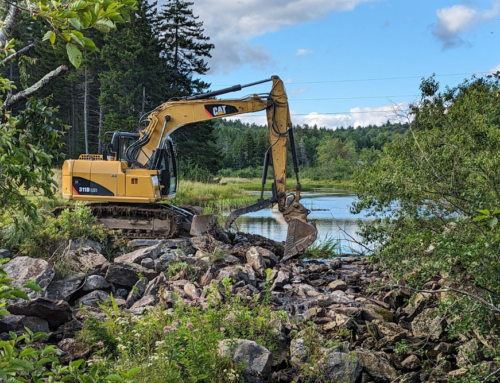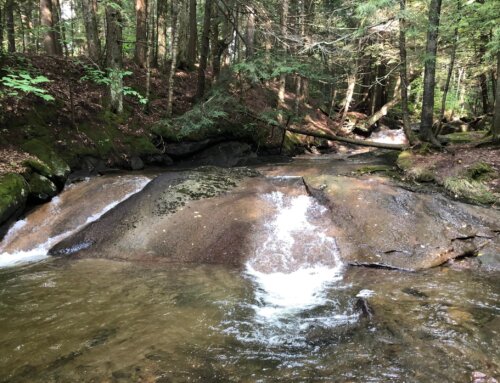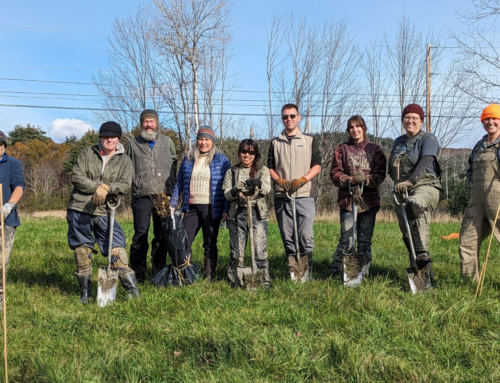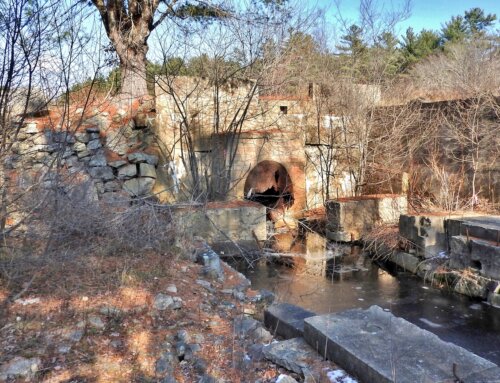Each week, Connecticut River Conservancy volunteers go out to their local tributary rivers in the Connecticut River Valley to monitor for river herring as the fish return to freshwater ecosystems to spawn. These dedicated volunteers provide CRC, the CT Department of Energy & Environmental Protection (DEEP), and other partners with valuable data to track where river herring are present and absent. DEEP monitors at several locations in the watershed, and this joint program helps to provide a more comprehensive understanding of the health of our river herring populations. Many thanks to our partners and volunteers who give this program life!
Fish Update from the Waters
Written by Steve Gephard, former fisheries biologist with the CT Department of Energy and Environmental protection.

CRC supporter, Paul Young, drew this cartoon of volunteers looking for river herring. We certainly have a dedicated group of volunteers on the river!
Will you ever get tired of me saying not much has happened this past week due to cool water temperatures? It seems like it is always the same, and, frankly, this has been typical for the last few years. Despite some warm days and advanced date (it’s May 13th for heaven’s sake!), both Kevin Job (CT Department of Energy and Environmental Protection) and Ken Sprankle (US Fish and Wildlife Service) are reporting water temperatures in the low 50s (F). That is what we normally see in early April. Consequently, the runs are building very slowly. Volunteers are seeing that and report little activity during this past week. The alewife run is practically over (although Ken still reports netting them in the lower river) and the blueback herring run is slow to build due to the cool temperatures. They’re in the river, for sure, but not pressing up into the tributaries to spawn yet. I’m away in Maine stocking salmon so I was not able to snorkel this past week, but Ken’s sampling reports blueback herring in the lower tributary rivers, like the Farmington, Chicopee and Westfield Rivers, but they are not moving up through the fishways yet. Only one has been counted at the Holyoke Fishlift.
Kevin reports the alewife run is practically over all along the Connecticut coast. The premier run at Brides Brook was only 243,000, which is a low year. All other runs are disappointingly low, too. The run at Mill Brook (a CT River tributary in Old Lyme) has logged 20,000+ at fishway #1 (Mary Steube) and 2,300+ at fishway #3 (Rogers Lake), which isn’t bad, considering that run is still in the re-building stage.
Often, the peak of the blueback herring run is around late May/Memorial Day weekend. If the weather improves and we start getting both warm days AND nights, the water temperature should spike up to the low- to mid-60s (F), we should start seeing more bluebacks entering the tributaries and being observable by volunteers. Volunteers at Wethersfield Cove, be sure to stay vigilant and keep an eye on the Cove, as there could be a big spawning event in there if the stars align.
Suffice it to say the shad passage at Holyoke to date has been equally disappointing. It was shutdown due to high water from April 30 until May 10, but the river level is now dropping and if the water warms, they could have some really heavy lift days there soon. The last few days they’ve been lifting only around 2,000 per day. I note with interest that they have already lifted one shortnose sturgeon and a handful of sea lamprey.
I can report that the spring has been the same up here in Maine. We had warm conditions today in the 60s which brought out the blackflies, but there is a frost warning out for tonight, which will keep the water temperatures in these streams near 50 degrees F. The alewife runs up here are just gearing up and the salmon smolt runs seem to be winding down, although a good warm rain could flush more down. They caught their first adult salmon at the Milford trap on the Penobscot yesterday and expect more in the coming week. These observations seem to have little to do with our work on the Connecticut River but it is interesting to remember that we all are linked in New England and all of these species start running in the south (e.g. Connecticut River) and sequentially move northward around the Cape and into the Gulf of Maine as the spring progresses.
Steve Gephard
Volunteer River Herring Data from May 4th- May 9th
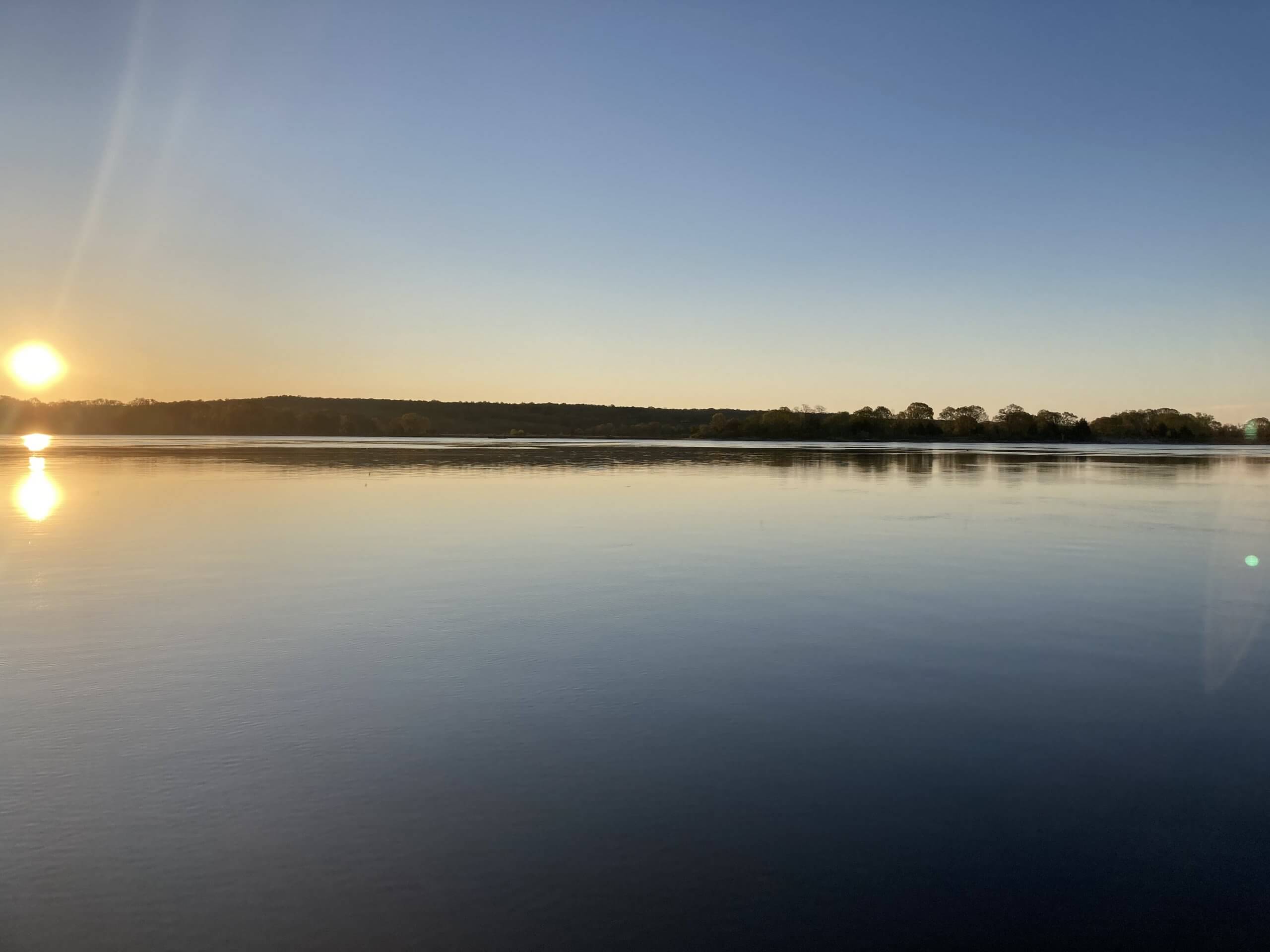
Sunrise on the CT River in Essex this week.
Volunteers this week reported high water levels across the watershed, flooding some observation sites and adding a new dynamic to the work. As Steve notes above, volunteers are primarily looking for blueback herring at this point and I’m keeping my fingers crossed for those who have yet to see some herring! We have about 3 weeks left to go with our program and are grateful for all of the volunteers sticking with it!
The map below displays data report from the season through May 3rd, but the color of the pin on the map may only reflects the most recent report. To see a more complete dataset, click on the dot, select “latest Measurements” at the top and click anywhere on the graph. This will pull up all of the reports represented so far.
Featured Site: Falls River, Essex CT

Laura B. also took this amazing photo at her monitoring site along the Falls River!
Falls River in Essex is the most southern volunteer observation site in the CRC River Herring Program. The Falls River is just under 8 miles and a beautiful tributary to the CT River, winding mainly through private property before reaching its confluence in the North Cove in Essex. The Essex Land Trust maintains trails adjacent to the river, and the coves make for beautiful paddling. Check out the map from the Essex Land Trust if you’re interested in exploring this gem. As a bonus, the Falls River is also our most observed site to-date with a total of 35 reports!
Laura, a volunteer at the Falls River site shares her reflections on the season so far: “I love the outdoors and can’t think of anyplace I’d rather spend my time. I believe it is so very important to take care of the Earth and that everything we can learn about helping create a healthy planet is now urgently needed. Living next to the Connecticut River has allowed me to soak in the beauty and wildlife all around this amazing shoreline. Helping out with the River Herring project at the Falls River location has not only educated me but allowed me to help my community in some small way. Volunteering has helped me find purpose and connect with the natural habitat and wildlife that surrounds me. I will continue to do what I can to help protect our planet. Thank you Connecticut River Conservancy for this opportunity.”





